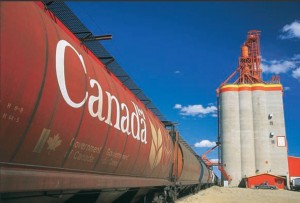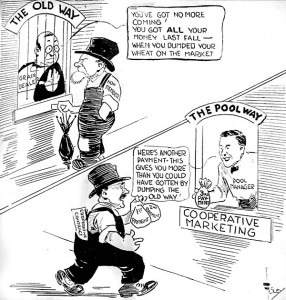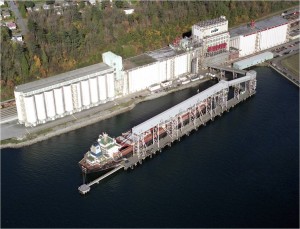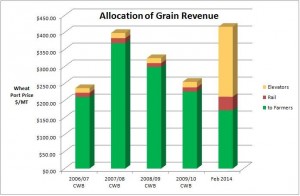 (February 23, 2016) First, let’s be clear. The Canadian Wheat Board (CWB) was not a monopoly, or supply management, nor was it a socialist institution imposed on the powerless west to help a bunch of illiterate immigrant farmers as some would have you believe.
(February 23, 2016) First, let’s be clear. The Canadian Wheat Board (CWB) was not a monopoly, or supply management, nor was it a socialist institution imposed on the powerless west to help a bunch of illiterate immigrant farmers as some would have you believe.
The CWB was more than just its office building, rail cars and grain ships. The CWB was the most successful of capitalist institutions designed to work for prairie grain farmers in a globalized economy and compete with the other four grain companies that trade essentially all the other grain in the world. The only reason it could do so was because it was the exclusive dealer of prairie wheat and barley.
The CWB had the legal authority to be the only seller of western Canadian wheat and barley for export and domestic human consumption. While some call it a franchise and others call it an exclusive dealership, most called it the “single-desk.” That meant all the grain processing industries in Canada and around the world who wanted quality assured wheat and barley for export or domestic human consumption had to purchase from the CWB. Because the CWB presented a united front to the buyers on behalf of western grain growers we had market power to get the maximum value of our crops.
Compare that to now where farmers must go cap in hand to the big international grain companies hoping they are getting a better price than their neighbours or hire grain brokers to do it for them. The CWB gave farmers 90% of world price or more while now we are lucky to get 60%, a loss to western Canada of at least $3.25 billion each year.
Our single-desk CWB was something uniquely Canadian which has been copied and renewed by others all over the world including in the US. It provided quality assurance to customers giving western farmers an unrivaled international reputation for honesty and delivering premium quality grain. For many years it was among Canada’s top ten net-foreign exchange earners. Yet it never made a dime in profit and most years cost its farmer-owners nothing to operate. It was the only grain marketer in the world that published an annual independently audited statement that laid out exactly what it got for selling grain and what it spent for doing that.
Many competitors hated the CWB and used the US government to launch 14 unsuccessful international court challenges against the Board, usually claiming it was undercutting prices, claims which turned out to be completely false. This is also exactly what the Auditor General of Canada found when she was invited, by the farmers elected to run the CWB, to do a full audit.
There are two kinds of grain farmers on the prairies. The majority are the successful ones who were supportive of the CWB. The benefit farmers gained from the CWB was proportional so the larger the farmer the more they gained. Successful smaller farmers also supported the CWB on principle, although many of them were too busy to actually worry about the details.
The other kinds of farmers are the minority. Often embittered, this group is usually heavily in debt, often insolvent, attempting to grow their way out of debt by borrowing more money to rent more land, equipment, and inputs to grow their operations. They can be described as the “know how, but don’t know why” group.
The farmer-owned single-desk Wheat Board took an undifferentiated product grown by thousands of farmers that is almost worthless unless it is amalgamated into the 30 and 60 thousand metric tonne lot sizes customers want; branded it, promoted it, and then sold it for premium prices around the world. To put that in context, a typical rail car holds a mere 90 tonnes of wheat and the CWB arranged to send some 350,000 of them containing identity-preserved wheat and barley to port each year. The CWB returned the money to the people who produced the grain through a price pooling system that made sure all farmers received the full value of the crop over the year regardless of when they delivered their grain for sale.
Prairie farmers delivered their grain to 326 inland terminals across the prairies. Then the CWB contracted with the railways to move the grain to deep water ports. Just a handful of those inland terminals would store the whole of Ontario and Quebec’s annual wheat production.
The CWB chartered the ships to carry the grain, and made sure the ships got filled on time and on budget. In the 14 years the farmers ran the CWB it never paid net costs for late shipments and never bungled a sale. Last year, without the CWB, late fees (demurrage) topped $75 million. 
In CWB directors elections typically 80% of the Director positions went to farmers in favour of the single-desk. Now that the results of the experiment comparing the CWB to the speculative market are in, even the debt-blinkered crowd is starting to see that 90% of any number is better than 60%. No doubt their bankers are starting to understand that too.
We need the single desk back.


